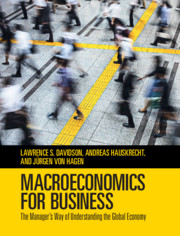When
I crossed through Checkpoint Charlie from West Berlin to East Berlin nearly 30
years ago, the failures of former East Germany were immediately obvious. The
grey unkempt landscape and dilapidated buildings looked as though that country
hadn't been repaired since American and Soviet tanks faced off yards apart
decades earlier in one of the most tense nuclear showdowns.
While
there, I witnessed the dismantling of the Berlin Wall and observed the first
free parliamentary elections held in that region since 1933. Although these
historic events marked the end of Soviet-dominated Communism, that system began
collapsing several years earlier.
Michael
Novak, the author of dozens of books on the philosophy and theology of culture,
stressed that checks and balances are to the political order what competition
is to capitalism. The former Soviet Union, East Germany and other
Soviet-controlled countries did not have a system of checks and balances or
real competition, and failed miserably.
Even
today, China has not designed a system with these critical functions.
Consequently, its brand of one-party capitalism is undergoing difficulties that
are likely to become more severe in the years ahead.
The
American system of checks and balances is part of a critically important
formula that prevents any one group from permanently imposing its will on
others. It shepherds constant changes — some good, some bad — but always allows
for self correction.
Combined
with American free-market capitalism, which promotes dynamic and healthy
competition, as well as a brilliant Constitution, the rule of law, and
separation of church and state, these factors have improved the lives of
millions of people. They also have attracted the world’s brightest
entrepreneurs, engineers and scientists, and empowered people to unleash their
creativity, take risks, and start new businesses.
But
to continue to succeed, this American experiment also requires trust in
important American institutions, like good government, a well functioning
electoral system, a fair judiciary, and sound property rights that protect
investments. And herein lies a big problem: faith in many American institutions
is declining, especially in government.
Stated
in a recent report by the Pew Research Center, “Long running surveys show that
public confidence in the government fell precipitously in the 1960s and ‘70s,
recovered somewhat in the ‘80s and early 2000s, and is near historic lows
today.” The report also indicates that only 37% of those interviewed have at
least a “fair amount” of confidence in elected officials to act in the best
interests of the public, and 63% have “not too much” or “no confidence at all.”
According
to the report, “Why Institutions Matter for Economic Growth,” published by the
World Economic Forum, a Geneva-based non-profit organization best known for its
annual meeting in Davos, Switzerland, institutions play an important role in a
country’s economic health. When trust declines, economies can fail.
A
country’s institutions, sometimes referred to as rules of the game, shape
behavior. If, for example, citizens don’t believe the legal system will protect
their farm or company from being stolen, then their incentive to work hard and
invest in a farm or company will be limited.
Only
25 miles apart, there are many differences between San Diego and Tijuana,
Mexico. One has a relatively high standard of living, the other doesn’t. One
big factor is the strength and level of trust in the institutions they operate
under. For a simpler example, look no further than North and South Korea. One
country has a vibrant economy, the other can barely feed its people. One has
relatively strong institutions, the other doesn’t.
How
do we reverse the decline in trust in our institutions? The answer isn’t
simple. But support for American institutions — not today’s constant assault on
our electoral system, the independent judiciary, the rule of law, and the media
— would help. Although the erosion in trust began years ago, it needs to be
addressed before the damage mounts.
Many
Americans say they are happy with the performance of their stock portfolios and
the U.S. economy. But keep in mind that declining trust in American
institutions is tantamount to chipping away at the building blocks that make
America great and support our wealth creation model. And for me, this brings
images of Berliners chipping away at the Berlin Wall.
*John Manzella, founder of
the ManzellaReport.com, is a speaker, author and nationally syndicated columnist on global business
and economic trends. Contact him at
JohnManzella.com.
This article was nationally
syndicated by Tribune News Service.

